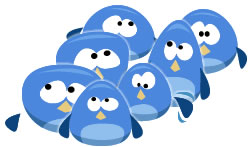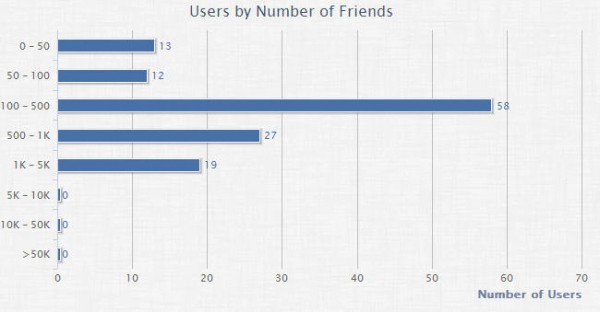A Brand And Its Twitter Army
In 1886, a case was brought before the US Supreme Court: Santa Clara County versus the Southern Pacific Railroad Company. The case was remarkable in that the Fourteenth Amendment was invoked, an amendment that was originally written in the aftermath of the Civil War to provide protection to former slaves. In this case, it was invoked […]
 In 1886, a case was brought before the US Supreme Court: Santa Clara County versus the Southern Pacific Railroad Company. The case was remarkable in that the Fourteenth Amendment was invoked, an amendment that was originally written in the aftermath of the Civil War to provide protection to former slaves.
In 1886, a case was brought before the US Supreme Court: Santa Clara County versus the Southern Pacific Railroad Company. The case was remarkable in that the Fourteenth Amendment was invoked, an amendment that was originally written in the aftermath of the Civil War to provide protection to former slaves.
In this case, it was invoked to provide protection to corporate entities, establishing the notion that corporations would have the rights of individuals.
During Occupy Wall Street, one of the rallying cries was that this protection must end. One notable poster stated, “I refuse to believe corporations are people until Texas executes one!”
But despite the protesters’ beliefs, people have been shown to project personality onto brands. Brand managers can cultivate that tendency and endeavor to create a brand with a personality that reinforces brand attributes. Still, on Twitter, a brand can be somewhat limited in how it communicates, particularly when seen in contrast to an individual.
For Example: Red Bull
If you look at an exemplary Twitter profile like that of Red Bull, you can see where the brand is doing everything it should be doing in the way of positive brand maintenance: regular postings, great lists that tell stories, and following back relevant people.

What you don’t see is very much chatter. You don’t see the Red Bull account doing high-fiving, top-of-the-morning kind of tweets. And with a large brand like Red Bull, that makes sense.
What a large brand can do, though, is activate its employees as a tweeting army.
SAP Example
SAP is a global technology company that has over 5,300 employees in 128 countries, with 47 different product lines in 28 different industries. The SAP Twitter account has over 63,000 followers, although the account is only following under 300 individuals back.
SAP has placed special emphasis on providing training and guidelines to its employees, helping to create a vibrant community around the brand. SAP has taken this a step further, and created a program of top community influencers, most of who work for SAP customers or partners. The Twitter list of SAP mentors is shown here. While the list is only comprised of 129 accounts, their reach is pretty significant, and highly targeted.

There are also over 39 official SAP Twitter accounts, and dozens of unofficial accounts associated with SAP. When you consider the thousands of individuals that are somehow associated on Twitter with SAP both internally and externally, it is easy to imagine that SAP on Twitter is much more than a single official account, but a real community. At this level, the organization has helped to establish the communities, and can now step back and play a supporting role.
Ritz-Carlton Example
A couple of years ago, the vice-president of global PR for Ritz-Carlton, Allison Sitch, was travelling in Shanghai, and met a remarkable and enthusiastic concierge, Apple Wang. As they chatted, Sitch formed the idea of having Wang share her vast knowledge of Shanghai with guests through social media.
Sitch wrote, “What excited me most was her passion for the destination and just how much she knew about it! Every little tip you could think of.” That was the start of a regular employee-guest Twitter program that is still going strong.
To date, the Ritz-Carlton has had over 200 employees participate in taking turns to share information and tips on Twitter. There is a regular “guest Friday,” wherein an employee sits in as the guest tweeter. There are at least 25 employees that join in regularly, from a sommelier at Half Moon Bay to a general manager at the New York City Central Park hotel.
The marketing team provides quarterly webinars for employees on how to best handle themselves on Twitter, along with written guidelines. According to Sitch, whenever a person is a guest tweeter for the first time, a member of the marketing team sits in with the guest.
The Ritz-Carlton is one of those “love brands,” like Harley-Davidson, Disney, or the Coca-Cola Company that has real fans. One of the interesting things I heard while speaking with Sitch was that while their existing customers tend to connect with them on Facebook, it’s on Twitter that the brand is able to make connections with journalists and travel professionals.
Raven Tools Example
It would only be natural for a company that makes tools for SEO and social media marketing would be making use of Twitter. At Raven Tools, employees, particularly those that are public-facing, are encouraged to create a company-specific branded account like @RavenJon, @RavenCourtney, and @RavenArienne. In fact, new employees are pointed to an extensive blog post on the subject that explains the thinking behind the practice.
Raven has recognized that companies can be dealing with a minefield of issues when it comes to tweeting employees. Who owns the account? Or the followers? Is it fair to ask an employee to use their personal account on behalf of the brand? Are they representing themselves or the company when they tweet? By having separate accounts that are company branded, a lot of those issues are obviated.
It might be argued that in having dual accounts, a person is dividing their true self. At my own agency, we found that in trying to maintain separate accounts, one or the other account would get short shrift, and thus we encourage employees to be themselves, and to develop their own brand.
A Twitter Army
Whatever policy you adopt, the first question to ask is whether your brand could benefit by having more people tweet? The question here isn’t whether you should have a Twitter account, but whether you should actively encourage many people in the organization to do so. The answer is likely to be different depending on your industry.
There are three main groups of tweeters:
- The main corporate or brand account
- Key people, such as the CEO or head of marketing
- Everyone else in the company
Then, depending on your brand, there might also be outside people, such as those SAP Mentors mentioned above.
The main corporate or brand account can be the main source of company tweets, but can also act as a sort of Greek chorus, supporting others tweeting for or in relationship to the brand.
It’s a numbers game: a marketing department can only do so much. If you added a dozen or more people tweeting, could there be a big effect? Each organization must examine the potential benefits and risks of actively encouraging the creation of a Twitter army. In any case, there is going to be a strong need to create policy and training – but if you really want to create that army, you have to encourage.
Feature image and accompanying images from VectorStock, used under license.
Contributing authors are invited to create content for MarTech and are chosen for their expertise and contribution to the search community. Our contributors work under the oversight of the editorial staff and contributions are checked for quality and relevance to our readers. MarTech is owned by Semrush. Contributor was not asked to make any direct or indirect mentions of Semrush. The opinions they express are their own.
Related stories